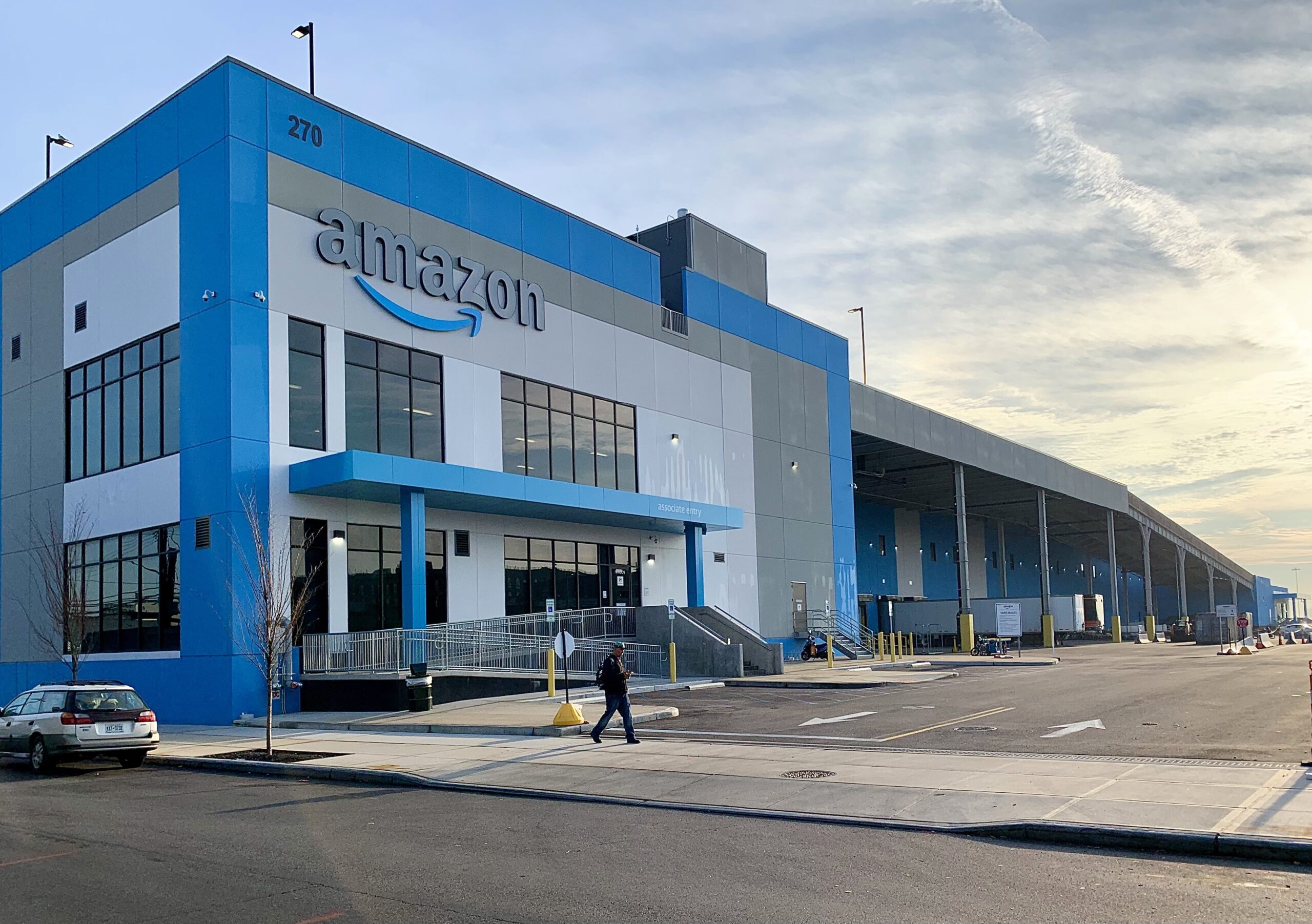Red Hook is overrun with trucks and delivery vans, residents say
Residents fear developers are building warehouses too fast

One of three currently-operating Amazon warehouses on the Red Hook waterfront. Each warehouse brings thousands of delivery vehicles through the neighborhood. Photo: Mary Frost, Brooklyn Eagle
RED HOOK — Thousands of trucks and delivery vans that service giant e-commerce warehouses are clogging Red Hook’s narrow streets and sidewalks, residents and business owners told NYC Department of Transportation officials at a meeting on Dec. 7 at the Joseph Miccio Cornerstone Community Center.
It was the second meeting held by DOT to share the progress of its ongoing, two-year Red Hook Traffic and Truck Study.
Attendees said they were grateful that DOT is conducting the study — but they worry that the city is moving slower than developers, who have been buying up millions of square feet of Red Hook’s waterfront to build even more “last-mile” warehouses to feed the city’s voracious e-commerce appetite.
